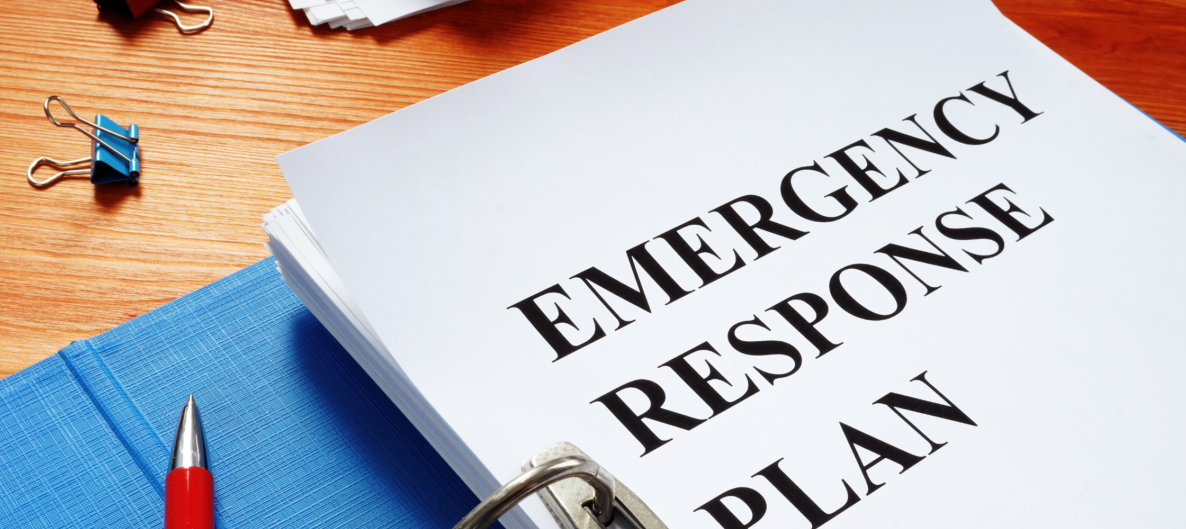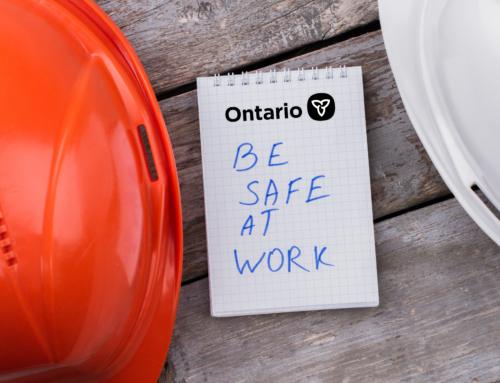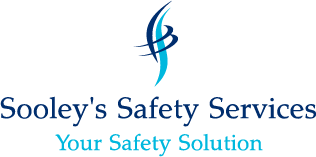Introduction
Emergencies can happen at any time. A specific plan to deal with major emergencies is an important element of Occupational Health and Safety programs.
An urgent need for rapid decisions, shortage of time and lack of resources and trained personnel can lead to chaos during an emergency. Time and circumstances in an emergency mean normal channels of authority and communication cannot be relied upon to function routinely. The stress of the situation can lead to poor judgment, resulting in severe losses. A well thought out, organized emergency response plan will help to eliminate these issues.
Why is it important to have an emergency plan? Here are a few reasons:
- It promotes safety awareness
- It provides guidance
- It demonstrates the organization’s commitment to the safety of its workers.
- Unrecognized hazardous conditions that could lead to an emergency situation are sometimes discovered.
- A lack of resources (equipment, trained personnel, supplies) is determined.
Not having an emergency plan could lead to severe losses, such as multiple casualties and possible financial collapse of the organization.
Let’s take a closer look at emergency response planning.
Objective
An emergency plan specifies procedures for handling sudden or unexpected situations. The objective is to be prepared to:
- Prevent fatalities and injuries
- Reduce damage to buildings, stock and equipment
- Protect the environment and the community
- Accelerate the resumption of normal operations
Emergency Plan
Development of the plan begins with a vulnerability assessment. The results of the study will show:
- How likely a situation is to occur
- What measures are available to stop or prevent the situation
- What is necessary for a given situation
From this analysis, appropriate emergency procedures can be established. At the planning stage, it is crucial the relevant individuals or groups be asked to participate. Members of the team can include:
- Employees with knowledge of the work
- Supervisor of the area or work
- Safety officer
- Health and safety committee
- Union representative, if applicable;
- Employees with experience in investigations
- “Outside” experts
- Representatives from local government, police, fire or ambulance
Guidelines for Preparing an Emergency Plan
The Emergency Response Plan requires the following:
- A description of potential emergencies. This is extremely important from an educational standpoint. Emergency preparedness is essentially based on anticipating all possible situations. This may include but not limited to:
- Fire, chemical spill, bomb threat or biohazard leak and spill, earthquake, power outage, severe thunderstorms or other force majeure events.
- A method for reporting the emergency. Generally, telephone is the most effective communication method, however, an alternative should exist if the emergency disables the phones.
- A list of workers responsible in emergency situations and how to contact them. This should be posted in a clearly visible location and include the Primary Incident Commander and Secondary Incident Commanders if the Primary Incident Commander is not available or indisposed.
- A plan for incident investigation and correction of hazards including responsibilities.
- A list of phone numbers for emergency and support services. This should be posted by the telephone and each workstation.
- A method for sounding an alarm, such as an air horn or warning bell.
- A map of the workplace clearly showing evacuation routes, head count, as well as, location of emergency equipment, first aid station and fire extinguishers. This should be designed based on the workplace layout and posted where visible (ie. a lunch/break room).
- The manager’s routine for shut down. This should be established to ensure if a shutdown occurs, no potential hazard is forgotten.
- A system for communication, both internal and external. Two-way radios, telephones or alarms should be available.
- An evacuation, head count and rescue plan. Rescues should only be attempted by trained individuals and only if they do not risk injury to themselves. Each supervisor must have a role call system in place to ensure all workers, visitors and/or contractors have been evacuated from the hazard area.
- Ensure any person(s) who require assistance are accounted for in the plan.
Emergency Response Equipment
The following equipment must be considered when developing an Emergency Response Plan:
- Fire Extinguishers
- Generally at each exit, but, consult with Ontario Fire Code Requirements for your workplace.
- Emergency Exit Lights
- Located at each exit, but, consult with Ontario Fire Code Requirements for your workplace.
- Should a power failure occur, the emergency lights should provide a minimum of 30 minutes of sufficient light for evacuation.
- First Aid Station
- Ensure you are compliant based on requirements of Regulation 1101, based on workforce for kit size and additional requirements.
- Ensure certified first aid attendants are working in the workplace during each shift.
- Specialized Equipment
- This may include respirators, tripods, confined space rescue equipment, sensors and other equipment specific to the job or task at hand. Reference the applicable Regulations and Standards that apply to your workplace for further instruction.
Plan Testing
Emergency plan rehearsals need to be held. A rehearsal shall require:
- Notification of emergency services, all supervisors and possibly prior notification of workers.
- A pre-determined “all clear” signal to allow rapid return to work.
- An evaluation system to determine the effectiveness of the emergency plan. (This is usually only a stopwatch timing to determine evacuation time).
Training
All staff will be required to complete training and understand their responsibilities in regards to emergencies and the procedures required. Training should be completed regularly, including at minimum, annually or when an emergency arises.
REMEMBER, PREVENTION IS BETTER THAN REACTION
If you have any questions about emergency response planning, or if you would like to discuss your workplace health and safety requirements in general, please contact me, as I am happy to assist you.
Phone: 416-984-1107
Email: doug@sooleyssafetyservices.ca







